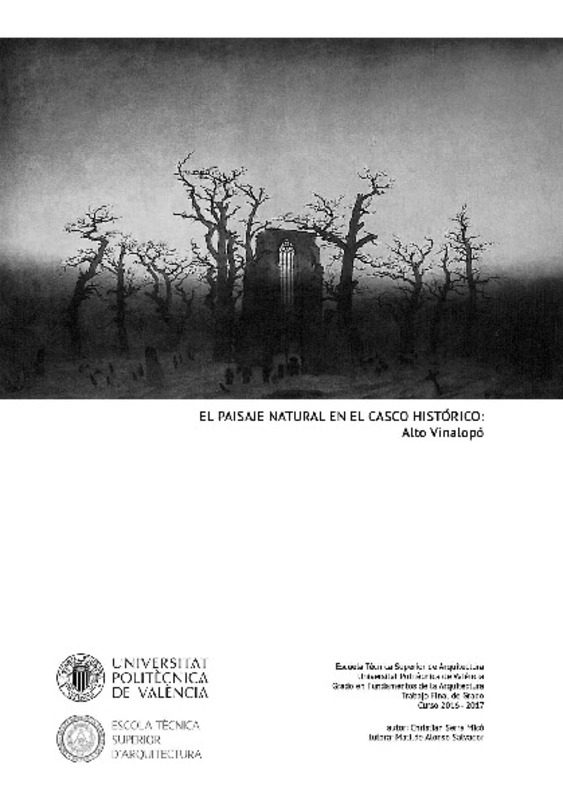JavaScript is disabled for your browser. Some features of this site may not work without it.
Buscar en RiuNet
Listar
Mi cuenta
Estadísticas
Ayuda RiuNet
Admin. UPV
El paisaje natural en el casco histórico : Valle del Vinalopó
Mostrar el registro completo del ítem
Serra Micó, C. (2017). El paisaje natural en el casco histórico : Valle del Vinalopó. http://hdl.handle.net/10251/110575
Por favor, use este identificador para citar o enlazar este ítem: http://hdl.handle.net/10251/110575
Ficheros en el ítem
Metadatos del ítem
| Título: | El paisaje natural en el casco histórico : Valle del Vinalopó | |||
| Autor: | Serra Micó, Christian | |||
| Director(es): | Alonso Salvador, Matilde | |||
| Fecha acto/lectura: |
|
|||
| Resumen: |
Se estudió la relación entre el paisaje natural, previa y final definición del mismo, con las tramas urbanas, en concreto los cascos históricos, en la región del Alto Vinalopó (Alicante). Para ello se visitaron los municipios ...[+]
The relation between the natural landscape, after defining this term, with the urban fabric was studied, in particular the historical centers, in the region of Alto Vinalopó (Alicante). For this purpose, the studied villages ...[+]
|
|||
| Palabras clave: |
|
|||
| Derechos de uso: | Reserva de todos los derechos | |||
| Editorial: |
|
|||
| Titulación: |
|
|||
| Tipo: |
|
Localización
recommendations
Este ítem aparece en la(s) siguiente(s) colección(ones)
-
ETSA - Trabajos académicos [4687]
Escuela Técnica Superior de Arquitectura






